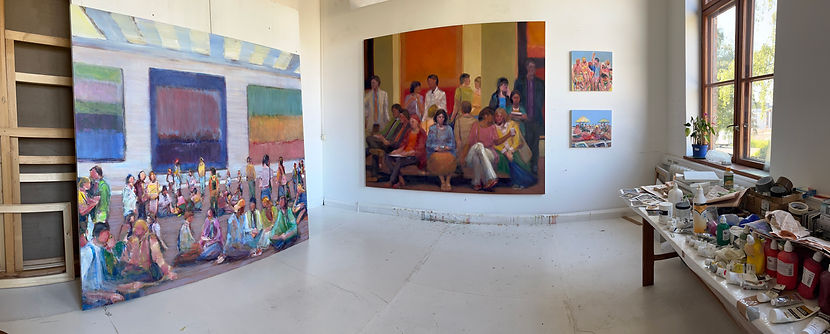
Simon Nicholas deals with the identity of crowds, and, coupled with a remarkable sense of composition, he has come up with a new vision of urban space. Putting painting back in the limelight is the other feat of this exhibition: here is a theme whose subject allows the artist to display his use of oil paint on the cusp between tradition and novelty. The æsthetic commitment in these paintings reveals something of Simon Nicholas’ background: the work is close in spirit to that of the younger generation of a School of London.It is therefore not surprising to find art historian Jill Lloyd’s analysis of this school acutely present on the gallery walls: “Since the 80’s many American and European artists have referred to historical sources, but these have been realized in the spirit of auto-regeneration which employed the ironic strategies of conceptual art. In Britain, however, a special emphasis has been put on the furthering of a tradition and the possibility of renewing the past in the light of the present.”For his latest paintings, Simon Nicholas has come to Luxembourg to find the crowds which fascinate him. “ Kirchberg Study”, “Mudam”, “Philharmonie”: perhaps for the first time in Luxembourg, the buildings of the Kirchberg area have created the necessary frame for such important assemblies of people that a new collective identity has emerged, a vision of a collective organically linked to the old city.By distinguishing each individual through chromatic and expressive brushstrokes, Simon Nicholas manages to convey multiple presences. He represents lives which balance between a new and immutable community, punctuated by a solitude which is no longer a condition of melancholy but the joyous expression of light and nuance, qualities intrinsic to painting.
(Radu Vesile, from an exhibition at Galerie Clairefontaine in 2016)